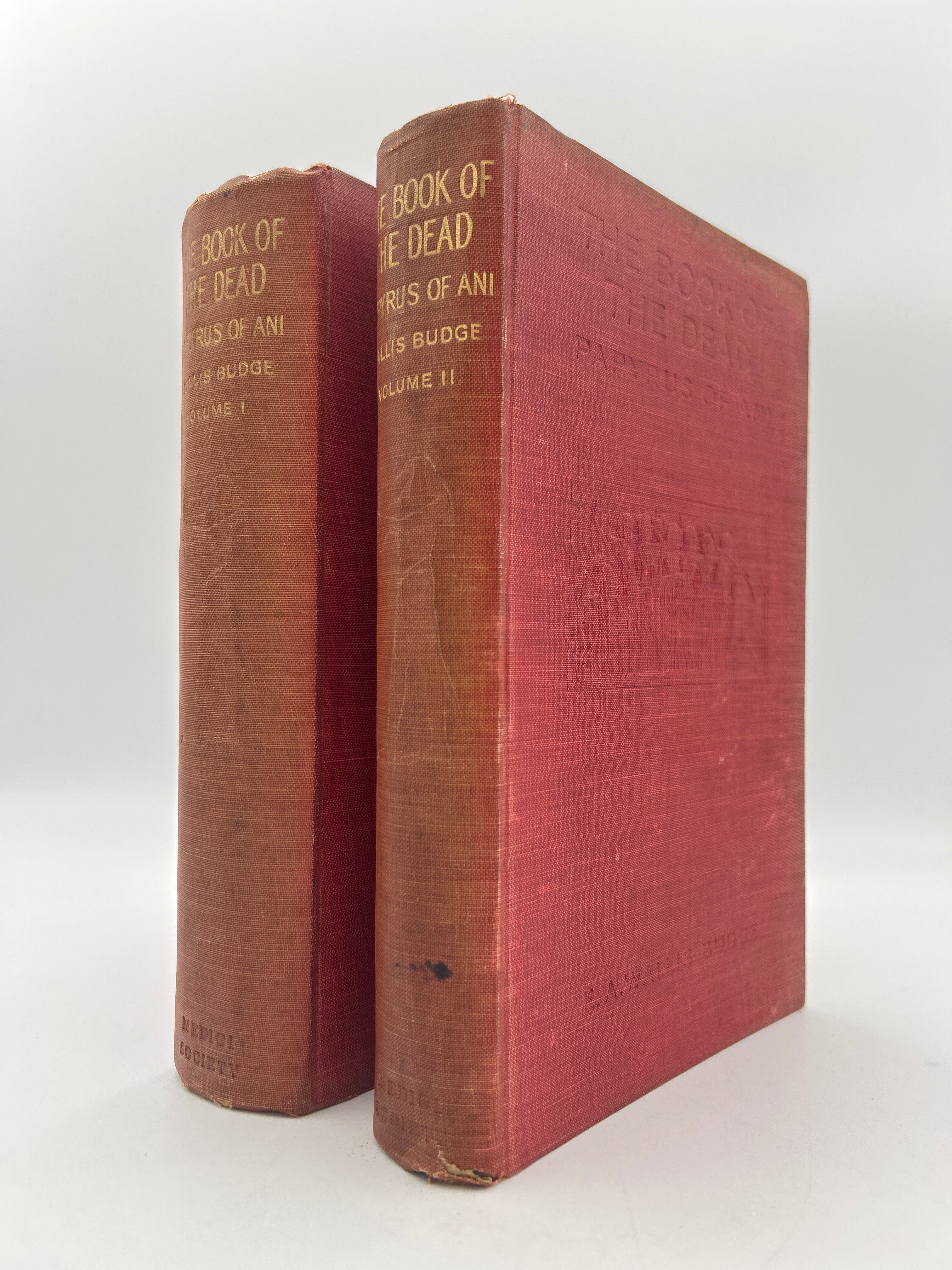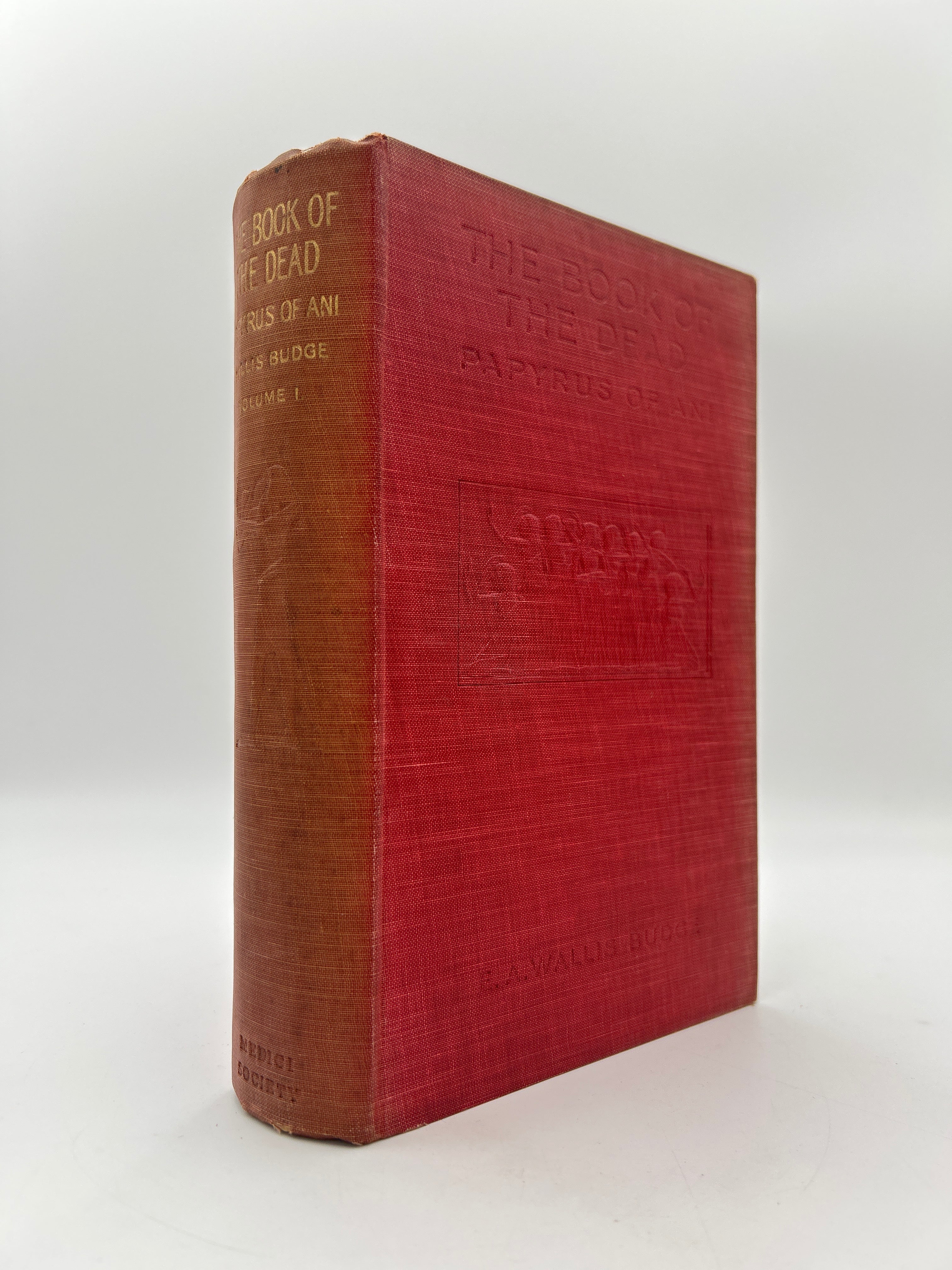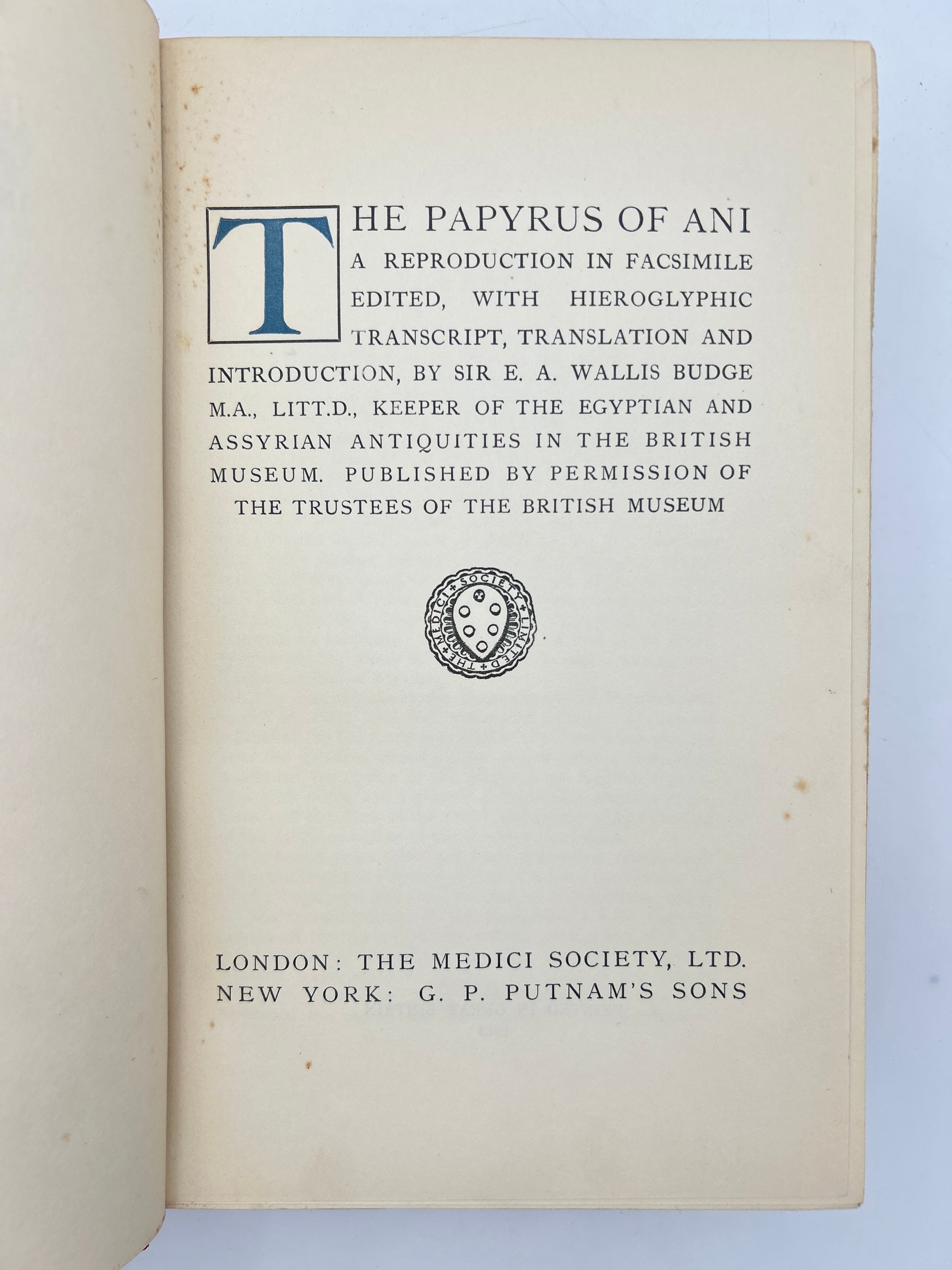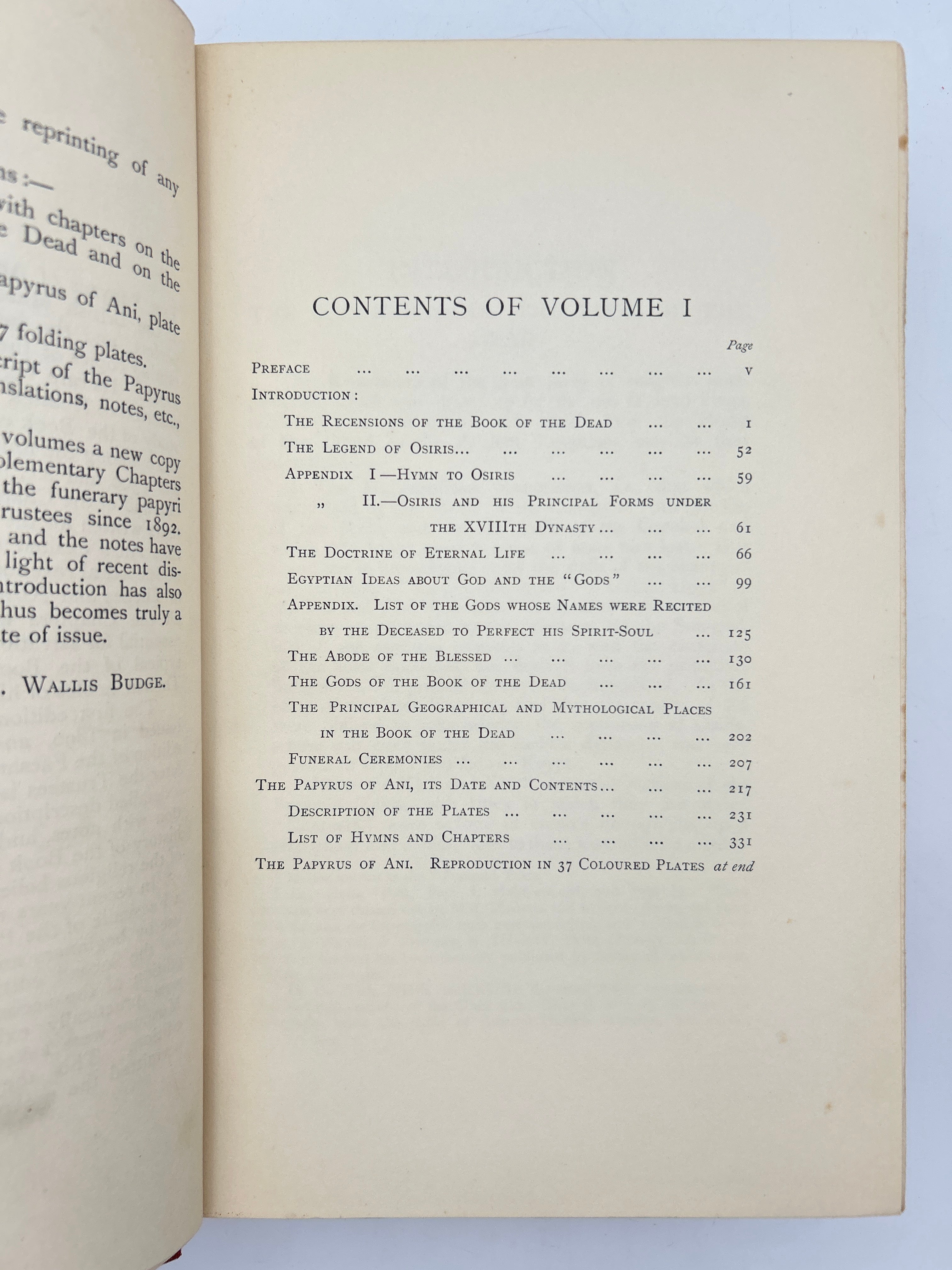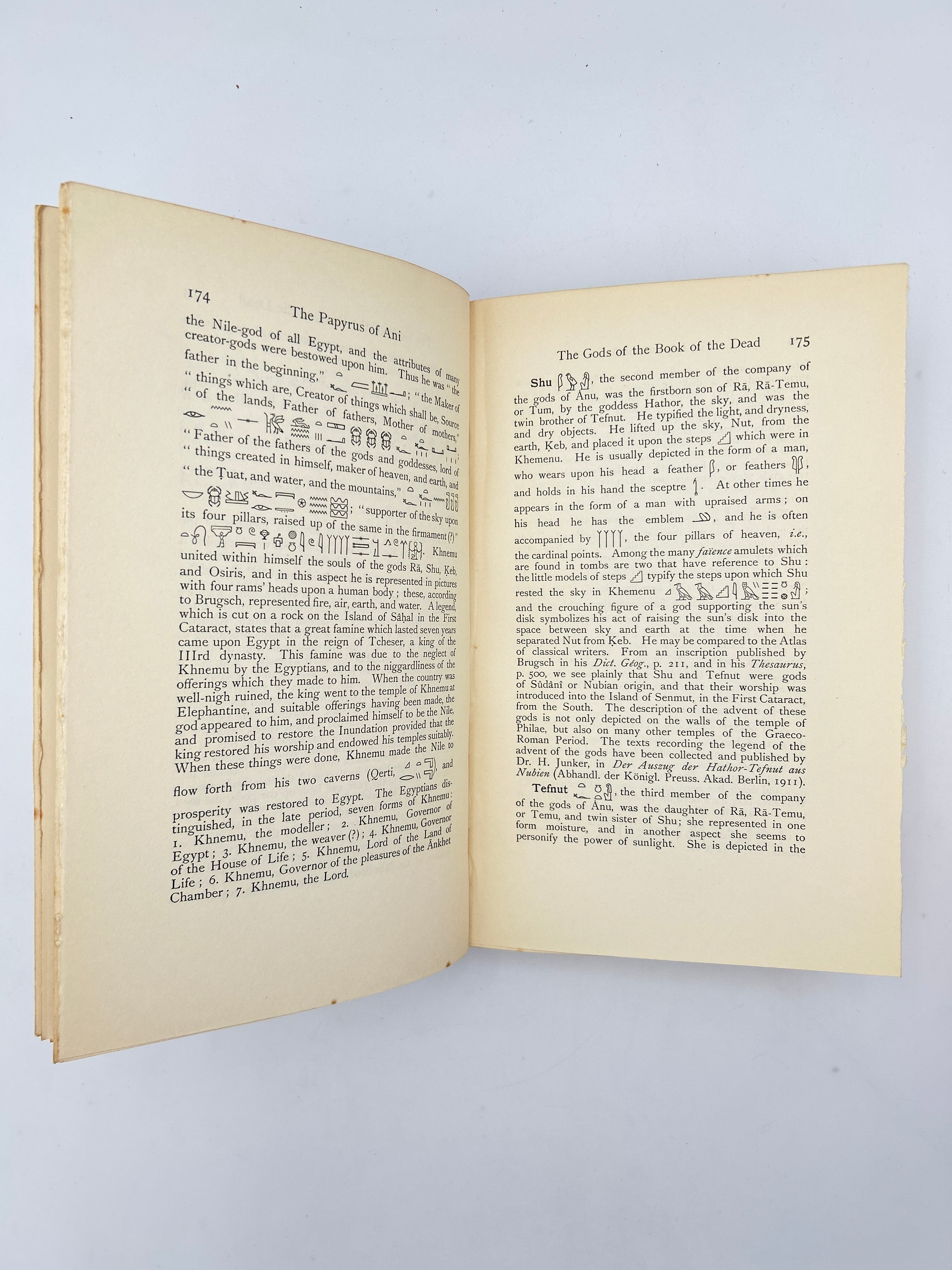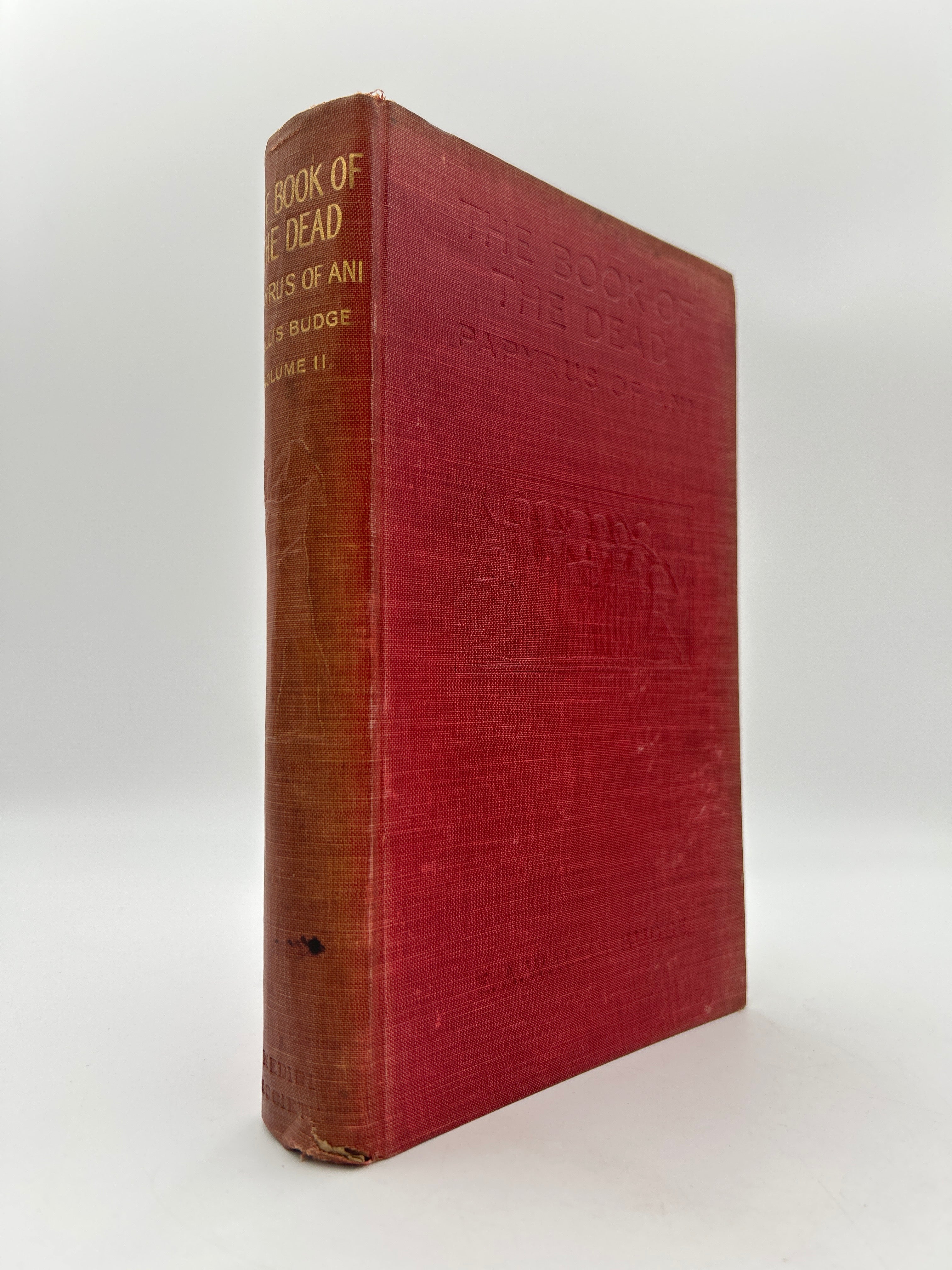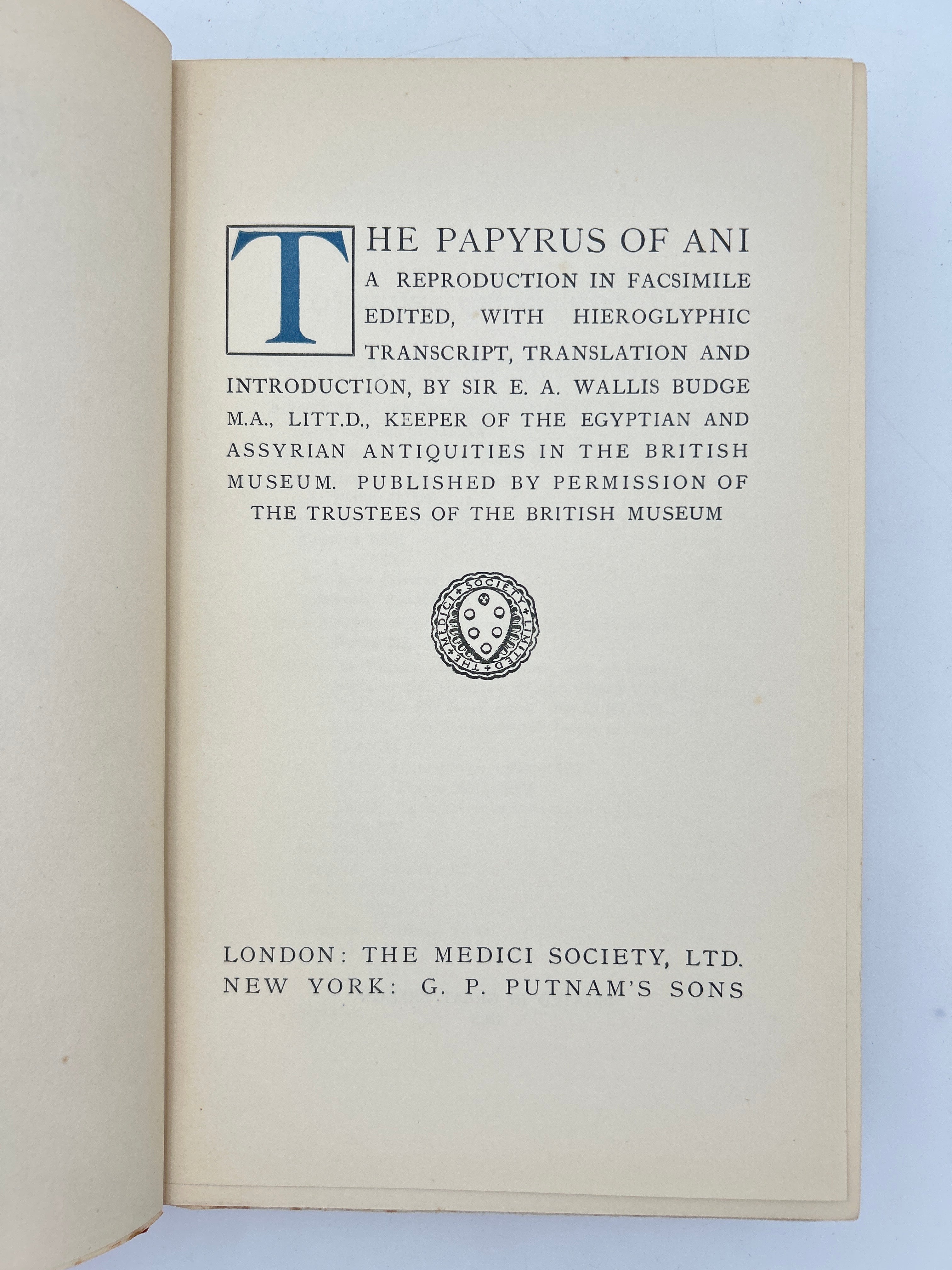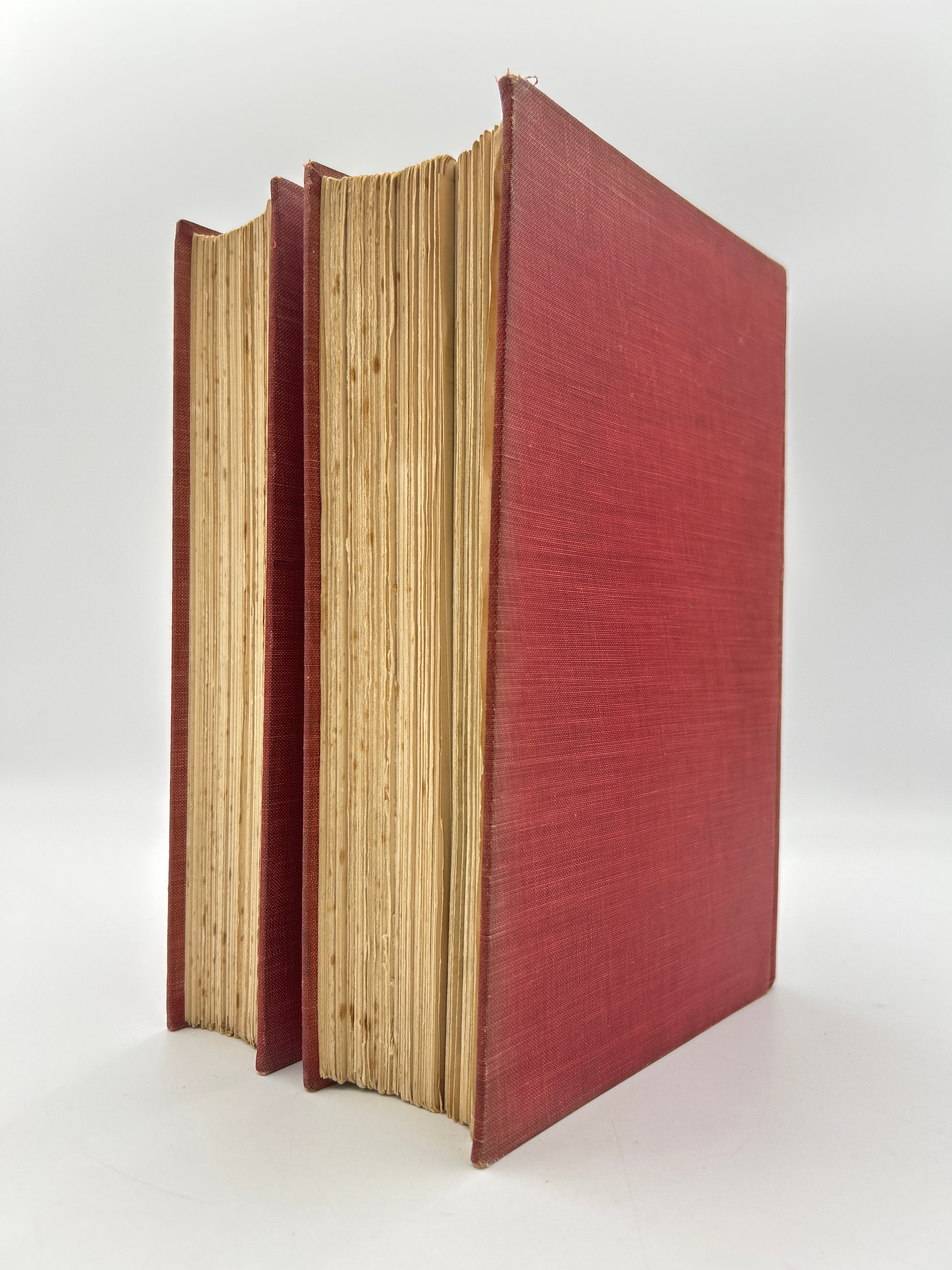The Book of the Dead 2 vols
Couldn't load pickup availability
5b Translation and Introduction by Wallis Budge. London: The Medici Society, 1913.
Notes
The Book of the Dead is a modern name for a collection of ancient Egyptian funerary texts, composed of spells, prayers, and incantations intended to guide the dead through the underworld and into the afterlife. These texts, developed during the New Kingdom period (c. 1550–1070 BCE), were often written on papyrus and placed in tombs alongside the deceased. Drawing from earlier traditions such as the Pyramid Texts and Coffin Texts, the Book of the Dead reflects the Egyptians’ deep concern with the afterlife and the moral and ritual knowledge believed necessary to achieve eternal life. Spells addressed gods, described the soul’s journey, and included protections against dangers in the afterlife, most famously the "Weighing of the Heart" before Osiris. Each copy could be personalized with the name of the deceased and selected spells tailored to their needs, making the Book of the Dead not a fixed text but a fluid religious tool central to ancient Egyptian burial practices.
In later centuries, interest in the Book of the Dead surged with the rise of Egyptology in the 19th century. The most influential printed edition came in 1842 when German Egyptologist Karl Richard Lepsius published the first modern compilation, giving it the now-standard name Totenbuch (“Book of the Dead”). In the decades that followed, British Egyptologist E.A. Wallis Budge produced widely read English translations in the late 19th and early 20th centuries, including illustrated editions such as The Book of the Dead: The Papyrus of Ani (1895), based on a richly decorated papyrus held by the British Museum. These printings popularized the text in the West, influencing art, literature, and spiritual movements. Though modern scholarship has revised many of Budge’s translations, his editions remain culturally significant for bringing ancient Egyptian beliefs to a broad audience in accessible book form.
E.A. Wallis Budge (1857–1934) was a prominent British Egyptologist, philologist, and curator who served as Keeper of Egyptian and Assyrian Antiquities at the British Museum from 1894 to 1924. During his tenure, he was instrumental in expanding the museum's collections through numerous expeditions and acquisitions, often navigating complex political and colonial networks to secure ancient manuscripts, mummies, and artifacts. Budge was a prolific author, best known for his popular translations of Egyptian religious texts, including The Book of the Dead, which introduced ancient Egyptian mythology and funerary practices to a broad English-speaking audience. Though later scholars have critiqued aspects of his methodology and translations, Budge's work played a crucial role in shaping early Western understanding of ancient Near Eastern and Egyptian civilizations and in establishing Egyptology as a popular field of study in the late 19th and early 20th centuries.
Description
Two Volumes in red canvas binding. Debossed lettering and illustration to upper boards. Gilt lettering to spine. Illustrations throughout. Sunfading to spine. Fine condition.
